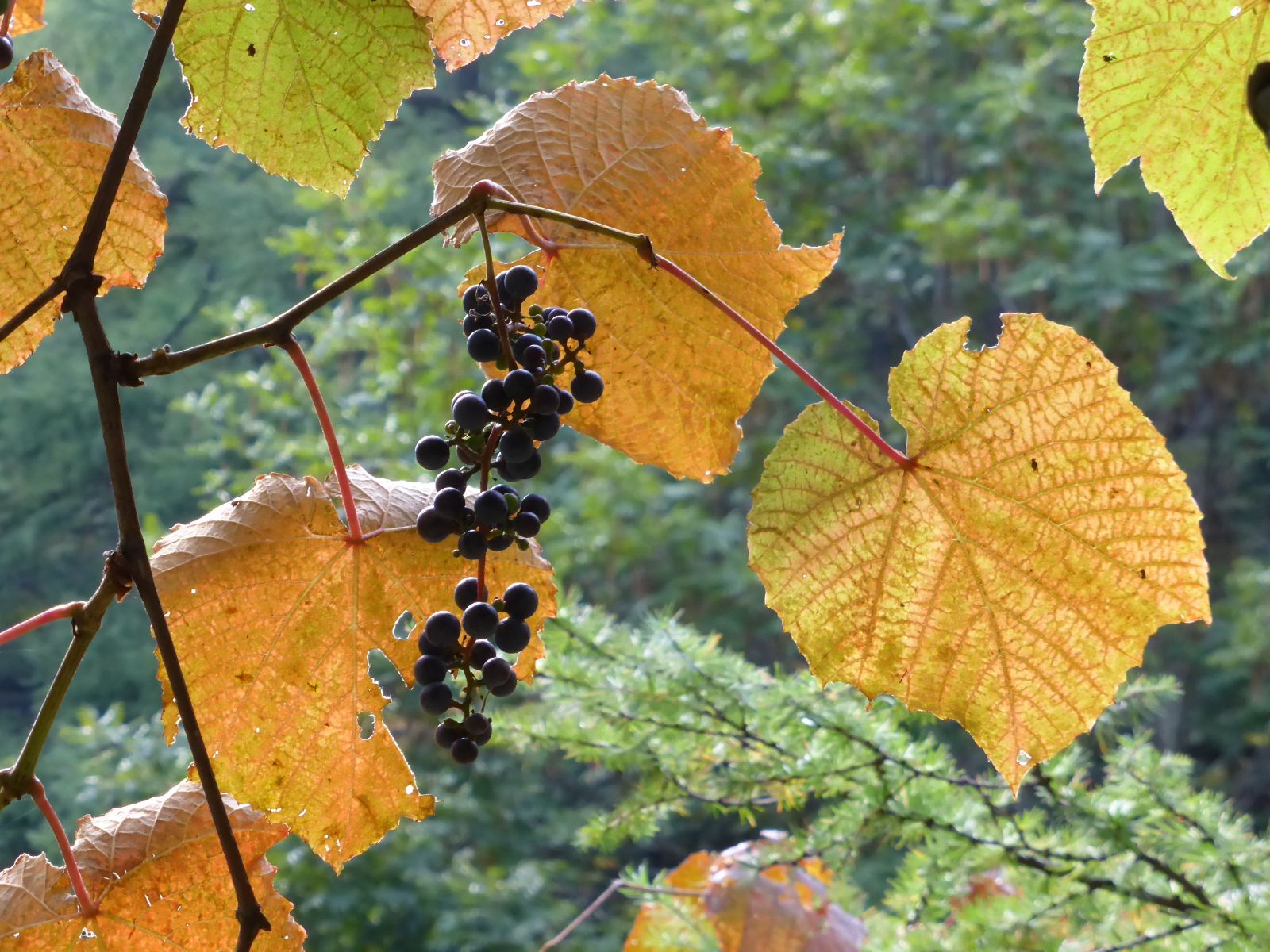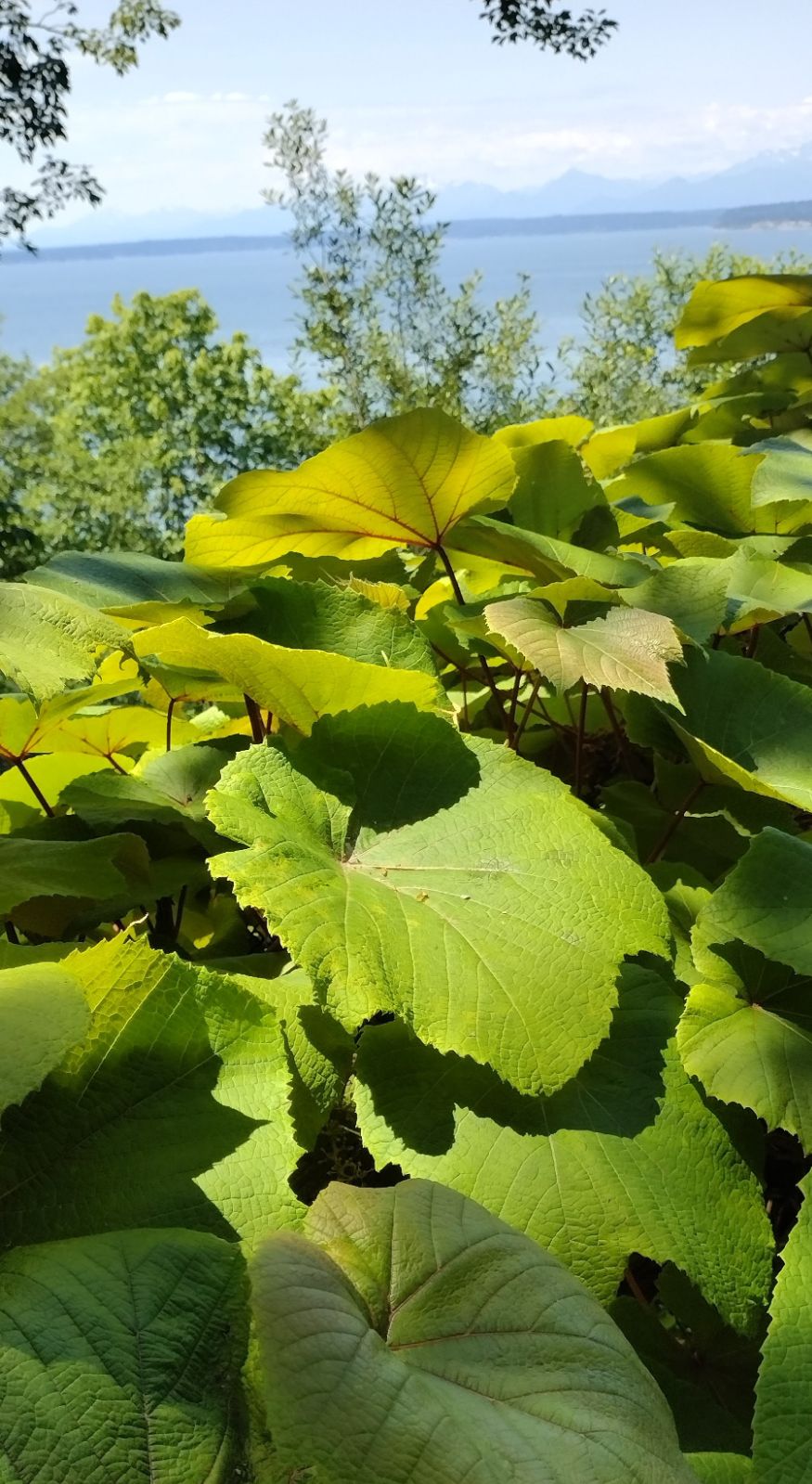Vitis coignetiae
Credits
Article from Bean's Trees and Shrubs Hardy in the British Isles
Recommended citation
'Vitis coignetiae' from the website Trees and Shrubs Online (treesandshrubsonline.
Genus
Synonyms
- Vitis thunbergii Hort., not Sieb.
Infraspecifics
Other taxa in genus
A very vigorous deciduous climber, reaching the tops of the highest trees; young shoots round, ribbed, and at first covered with a loose greyish floss; there is a tendril missing at every third joint. Leaves perhaps the largest among vines, being sometimes 12 in. long and 10 in. broad, ordinarily 4 to 8 in. wide; they are roundish in the main, rather obscurely three- or five-lobed, the lobes and apex pointed, the base deeply heart-shaped, shallowly to coarsely toothed, dark green and glabrous above, covered beneath with a thick rusty brown felt; stalk from 2 to 6 in. long, somewhat woolly. Berries black with a purple bloom, 1⁄2 in. wide.
Native of Japan; described in 1887 from plants which had been raised from seeds collected in 1875 by Mme Coignet, daughter of the French rosarian Jean Sisley, who was travelling in Japan with her husband. It was apparently first introduced, however, to Anthony Waterer’s Knap Hill nursery through Messrs Jardine and Matheson, East India merchants. The original plant there grew up some trees by the road and made a glorious display of crimson every autumn. Owing to difficulty in propagation it spread very little in cultivation, only a few layers being produced each year. No name could be found for the Knap Hill plant until about 1894, when it was identified as V. coignetiae at Kew. By that time the species was becoming more widely available. A large quantity of seed was sent to France in 1884 by Degron, collecting for the French government, and Messrs Späth of Berlin were offering plants from imported seeds by 1893–4. There was a second introduction to Britain by J. G. Veitch in 1892 but his firm appears to have distributed the species as V. thunbergii, the plants they sold as V. coignetiae probably being the true V. thunbergii.
In the forests of Hokkaido, according to Sargent, V. coignetiae ‘climbs into the tops of the largest trees, filling them with its enormous leaves, which in autumn assume the most brilliant hues of scarlet.’ It was in this way that it grew at Knap Hill and now does in many gardens. In the size of its leaves and in the richness of its colour in autumn, it is undoubtedly the finest of the true vines. Seedling plants have leaves very much more deeply lobed than fully grown ones.


